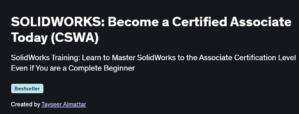What will you learn in Unreal Engine: Open World Landscapes Course
Download, install, and set up Unreal Engine 4 for level design projects
Create and stitch together multiple landscapes to craft expansive open-world environments
Sculpt terrain features—mountains, valleys, plateaus, and caves—using the Landscape tools
Design and apply landscape materials and textures (mud, grass, rock, snow) for realistic surfaces
Program Overview
Module 1: Project Setup & Interface Familiarization
⏳ 1 hour
Topics: Unreal Engine installation; Landscape tool overview; workspace configuration
Hands-on: Launch your first UE4 project and configure the Landscape editing layout
Module 2: Importing & Stitching Landscapes
⏳ 2 hours
Topics: Importing real-world heightmaps; aligning and merging multiple landscapes
Hands-on: Import two heightmaps and stitch them seamlessly into one world
Module 3: Sculpting Terrain Features
⏳ 3 hours
Topics: Sculpt vs. smooth brushes; carving plateaus, valleys, and caves
Hands-on: Sculpt a dynamic terrain featuring mountains, valleys, and cave entrances
Module 4: Materials & Texture Painting
⏳ 2 hours
Topics: Creating landscape materials; layer blending; texture painting workflows
Hands-on: Build a multi-layer material and paint mud, grass, and rock textures
Module 5: Foliage & Splines Placement
⏳ 2 hours
Topics: Foliage tool settings; procedural foliage volumes; spline placement for roads/rivers
Hands-on: Populate your environment with grass, trees, and spline-based roads
Module 6: Environmental Effects & Lighting
⏳ 2 hours
Topics: Day/night cycle setup; volumetric fog; directional light and post-process effects
Hands-on: Create a switching day/night system and add atmospheric fog and God rays
Module 7: Performance Profiling & Optimization
⏳ 2 hours
Topics: Profiling tools; LOD settings; streaming large worlds in and out
Hands-on: Profile your level, adjust LODs, and configure World Composition streaming
Module 8: Reporting & Export
⏳ 2 hours
Topics: Report generation; exporting to PDF and DWG; archiving best practices
Hands-on: Generate a full lighting-analysis report and export level geometry as DWG
Get certificate
Job Outlook
The average 3D Environment Artist in the U.S. earns $39.46 per hour (approx. $82,070 annually)
Demand for Level Designers and Environment Artists is growing as open-world and simulation titles rise in popularity
Skills in landscape creation and optimization open roles in AAA game studios, indie developers, and architectural visualization
Freelance opportunities abound for rapid prototyping and asset-pack creation
Specification: Unreal Engine: Open World Landscapes
|
FAQs
- Basic familiarity with Unreal Engine helps but isn’t mandatory.
- The course introduces key tools and concepts from the ground up.
- Beginners can follow along with guided environment creation.
- Curiosity about game design and landscapes is more important than expertise.
- Tutorials include both conceptual and hands-on learning.
- A strong GPU (NVIDIA GTX 1660 or better) is ideal for 3D rendering.
- Minimum 16GB RAM ensures smooth asset handling.
- SSD storage speeds up project loading and compilation.
- Multi-core processors help with lighting and terrain builds.
- Keep your Unreal Engine version updated for best optimization.
- Yes, Unreal Engine is used for architectural visualization.
- Film and animation studios use it for cinematic environment design.
- Virtual tourism and real estate industries use interactive landscapes.
- Simulation and training programs rely on realistic open worlds.
- These skills boost employability across multiple creative fields.
- Start with small terrains before attempting massive maps.
- Use free Unreal Engine assets to expand creativity.
- Recreate real-world landscapes to improve detailing.
- Join Unreal Engine forums and Discord servers for feedback.
- Document your work to create a professional environment portfolio.
- Yes, environment design is a core skill in game studios.
- You’ll learn workflows used by professional level designers.
- Strong portfolios can attract indie and AAA recruiters.
- Freelance opportunities exist in 3D world-building and assets.
- Combining this with skills like lighting and texturing enhances job prospects.





